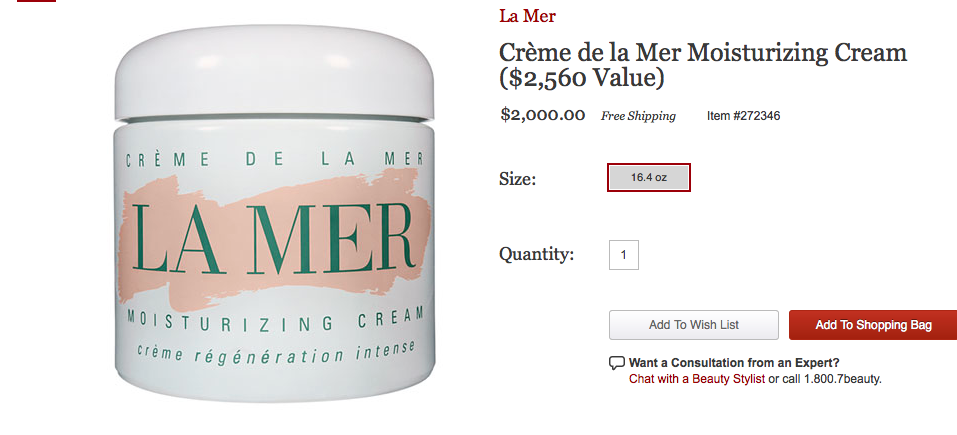When you were younger, you may have watched your mother put her makeup on in the morning or before she went out to dinner. You may have thought that all of the different brushes and creams were exciting. Yet, what you likely didn’t realize is that all of those soft powders and brightly colored lipsticks can actually be harmful- and pricy.
Nordstrom’s website, just one of many cosmetics ads, sells skin care products that range from 25 to almost 3,000 dollars. Expensive products like Creme de la Mer cost 2,000 dollars for a 16 ounce jar, but their most popular products are those that cost a couple hundred dollars. The products’ descriptions promise dazzling effects and claim to “work miracles,” which can blind consumers to their cost.
Mint.com gathered eye-catching facts that state that the average woman spends 15,000 dollars on makeup alone in her lifetime and that some women spend as much as 7,000 dollars a year on cosmetics. American consumers shell out 7 billion dollars on cosmetics annually, which is only a little less than what Americans spend yearly on education.
Those consumers who are “breaking the bank” to look beautiful may not realize that cosmetics can have a harmful impact on humans because too many products have not been tested enough. Cancer.org says that “Uncertainty exists because many products and ingredients have not been tested thoroughly.” Also, the US federal government doesn’t require health studies or pre-market testing on personal care products, so makeup companies are allowed to put almost anything they want on the market. This includes products containing carcinogens and parabens, just two of the many categories of cancer-causing chemicals.
If these products may be harmful to consumers and so expensive, then how does the cosmetics industry continue to rack up a hefty 35 billion dollars per year? The answer lies in the success of the industry’s marketing. For years, the makeup companies have been able to convince people that they need to have the products they are selling to make themselves seem more beautiful. Phrases as “Give us 5 minutes” and “We’ll make you Pretty Powerful (Bobbi Brown)” and “Easy, Breezy, Beautiful (Covergirl)” aim to convince consumers that the products will make them more confident and powerful. With slogans as, “We only test on Party Animals (Smashbox)” and “Makeup for All. All ages, all races, all sexes (MAC),” companies target people that may otherwise be against buying certain types of makeup.
Unfortunately, despite the high prices and harmful health effects, the large cosmetics industry is here to stay. With 4 out of 5 women wearing makeup on a daily basis and the industry’s popularity growing all the time, it looks like children in generations to come will watch their mothers put on their makeup, and their children will do the same.
Written by Esther Lawrence’18








